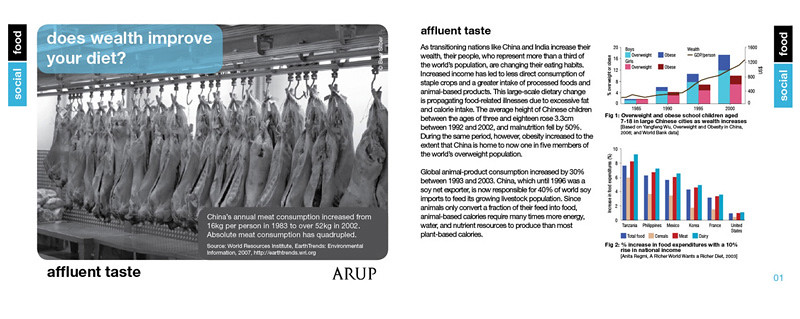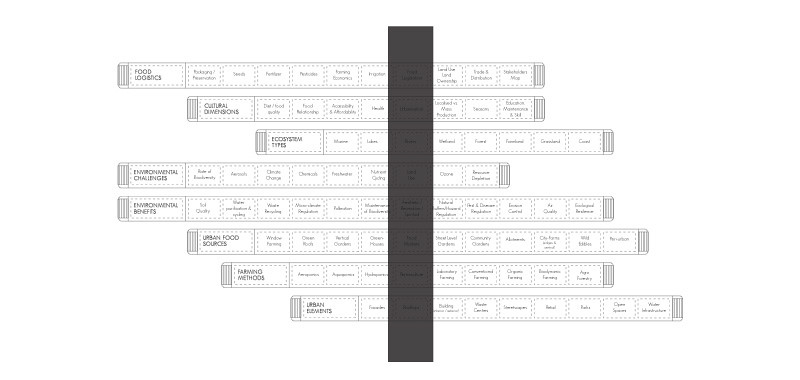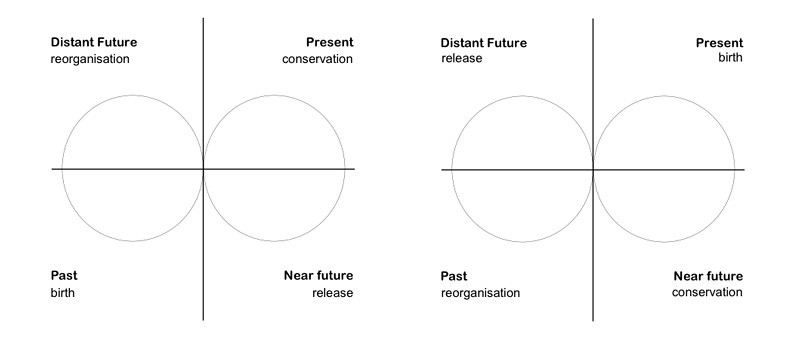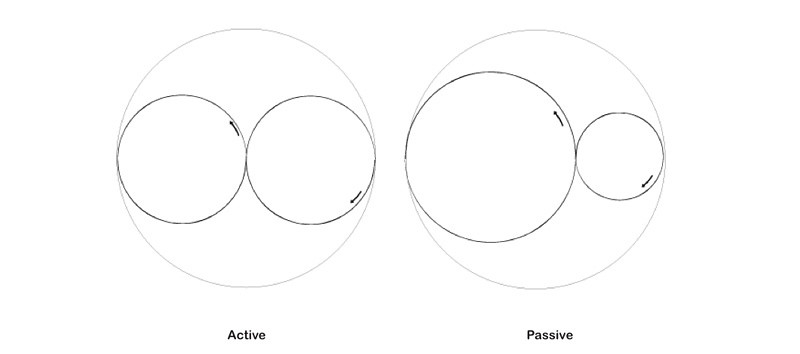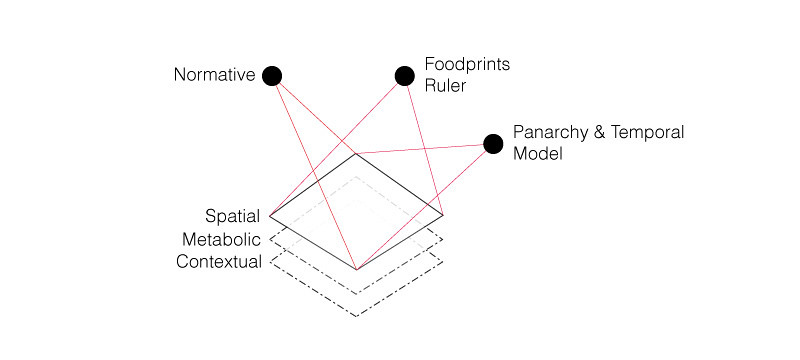Table of Contents
Composing a Scenario Symphony
Notes from FoAM's Scenario Building experiments, by Anna Maria Orru and David Relan
Note to the reader: this article assumes a basic knowledge of scenario building and strategic foresight. If you are new to this field, we suggest that you first read How to Build Scenarios by Lawrence Wilkinson as an introduction.
Testing resilience of possible futures
FoAM Nordica is developing a set of tools and experiments to link future scenario building with the concept of resilience. By resilience in this context we mean the capacity of a system (e.g. social, urban, ecological) to tolerate shocks and disturbances without falling apart or collapsing into a qualitatively different state. The ability to incorporate future instabilities is an important aspect of resilient systems and is the cornerstone of scenario building.
We'd like to hypothesise that the human ability to plan for the future can increase resilience in our social systems. Through scenario building we can make planning into a playful and empowering activity. We can create vivid stories grounded in the present and open to many possible futures, while at the same time challenging us to imagine the future as a dynamic entity that can grow, decay and even self-destruct.
We wanted to create a scenario-building kit – a symphony of visual tools and storytelling techniques that could be used by individuals, small groups and communities to turn dry and analytical planning into a playful, co-creative and collaborative activity. Through a series of conversations and design sessions the group could prototype possible future scenarios and use these as a framework to create real-life “future pre-enactments.”
Scavenging techniques from our previous projects such as Foodprints and Drivers of Change, we brought them together in a scenario symphony. These tools included the Foodprints ruler and temporal model from FoAM Nordica, as well as the panarchy cycle and Arup’s Drivers of Change food cards. Our challenge was to thread these various approaches together to create scenarios and test them for resilience over time.
To test the scenario building kit, we decided to try it out in practice. FoAM Brussels is located in Molenbeek, one of the “troublesome” communes of the Brussels-Capital Region. Our challenge was to look at what role food could play to improve contact and engagement between different cultural groups in Molenbeek.
FIGURE 1 – Example of a 'Drivers of Change' card (image credit)
Try this at home: the DIY / DIWO scenario building kit
- STEP 1: Identify your challenge. Identify the focal problem or “burning issue” you wish to examine – something everyone cares about and has some involvement in. Try formulating your challenge as a question. For example: Are we too many to feed? What should we focus our limited energy on? How could food improve contact and engagement in a multicultural neighbourhood? Be as specific as you can, finding the question that is at the core of your issue.
- STEP 2: Set the boundaries: A time frame (e.g. 2015), location (e.g. Molenbeek), and theme (“Food”).
FIGURE 2 – Foodprints Ruler (image credit)
- STEP 3: Map the territory. Create a list of physical, social, economic and historical characteristics of the place you're interested in, for example your family home, company HQ, neighbourhood, continent or the whole planet. Focus especially on characteristics that can influence change – either by supporting or by hindering it. As our topic was food, the Foodprints ruler (figure 2) was used to look at our challenge from a systemic point of view. You can develop a similar ruler for any given topic to meet your own individual discussion needs.
- STEP 4: Determine the driving forces. Identify what external influences could change the outcome of your “burning issue.” The issue doesn't exist in a vacuum. To understand the wider context of your question, examine the political, economic, social and technological trends or “drivers.” Look at both long term and short term, weak and strong influences. In our exercise, a few important drivers could be the rise of conservatism, increased demand for food diversity and Islamification of culture. This part of scenario planning probably takes the most time as it requires some research. The more real the drivers are, the more “grounded” your scenarios. You can make assumptions, but be aware that your scenarios will be built on subjective perception rather than facts.
- STEP 5: Rank drivers by importance and uncertainty. First, ask yourself how important each of the drivers is to your core question and rank them accordingly. Secondly, rank the drivers based on their uncertainty: will a driver change or remain constant. At the end of this exercise you should have a list with the dominant drivers at the top, which will become your “Critical Uncertainties” (CU). CUs are the driving forces that will be key in future developments of your burning issue.
- STEP 6: Pick two critical uncertainties. Pick two of the most important and most uncertain drivers – the ones that are vital to the challenge you identified in step 1. These CUs will be the axes of your scenario matrix. Each axis will graph the polar extremes of your chosen critical uncertainty. For example, the first critical uncertainty may be a strong community-oriented lifestyle contrasted with an individualistic lifestyle; the second, food abundance and food scarcity. Sometimes the axes need not represent polar opposites, but situations that are significantly different. In our Molenbeek example, our axes were “food diversity—waste” and “intolerance—curiosity.”
- STEP 7: Construct the scenario matrix. On a large sheet of paper draw a vertical line crossing over a horizontal line – an enlarged “+” sign, labelling the end of each line with one of the polar opposites of your two CUs. In this matrix, each of the four quadrants represents a skeleton of one scenario (see figure 3). For example: [scenario 1] food abundance in a community-oriented lifestyle; [scenario 2] food scarcity in community oriented lifestyle; [scenario 3] food abundance in individualistic lifestyle; [scenario 4] food scarcity in an individualistic life-style.
FIGURE 3: Scenario matrix
- STEP 8: Create scenario narratives. Draft a storyline/narrative for each scenario. Refer back to your challenge, boundaries, territory and drivers. You can use something like the Foodprints ruler again to add details to your scenario. Make sure you address the the consequences of each critical uncertainty.
- STEP 9: Identify your vantage points (i.e. what is the path from here to there?). Examine your present situation and think about what needs to change to arrive at each of the possible futures described in the scenarios. Consider which vantage points (contextual, metabolic, spatial and normative) can act as typologies within the scenarios (figure 7).
- The contextual vantage point embeds your scenario in the wider world. What would the wider world look like if your scenario came to pass?
- The metabolic vantage point looks at the points of contact between your scenario and the outside world – the inputs and outputs of people and resources, for example.
- The spatial vantage point looks at physical changes that need to happen for your scenario to be realised.
- Finally, from the normative vantage point ask yourself what the desirable outcome in each scenario is. Think about changes in mindsets and behaviours that would need to happen in order to reach this outcome. The normative vantage point can be thought of as the subjective perspective, pointing to the cultural values of the people involved and how these influence their behaviour. If you don't have too much time for the next steps, you can choose one “normative scenario” (or the most desired possible future) instead of continuing with all four.
- STEP 10: Locate your scenarios in the panarchy cycle. Map the “past, present, near future and distant future” of each of your scenarios to the four phases of the panarchy cycle. To do this ask yourself which phase your scenario is positioned in. For example, the “birth” phase could be the past, the “growth and maturation” phase the present, “death” the near future, and “renewal” the distant future (see figure 5); or perhaps your scenario is situated in the creative chaos of the renewal stage – on the verge of a complete transformation.
FIGURE 5 – Examples of mapping temporality onto a panarchy model
- STEP 11: Create an active and a passive future. Design a passive future for your scenario where “business as usual” continues through all activities, regardless of what happens within and without the system in the long term. Next, design an active future where the scenario evolves towards an adaptive state of balance between its internal and external conditions – thereby becoming more resilient.
FIGURE 6 – Active and passive future
- STEP 12: Visualise scenarios. To illustrate your narratives, begin creating visuals for each. You could create one moodboard per scenario. Sometimes this is sufficient. In other situations you might want to create concept art illustrations or photomontages.
- STEP 13: Prototype scenarios In this step your aim is to experience the full complexity of the scenarios you have devised. One way to do this is to enact each scenario as a performance. This can help to raise awareness of its challenges, and how all those involved might react in the scenario. You could use tools such as inflatables and actors, or whatever you wish in order to convey and embody your scenario. This step is a longer process that requires project planning and production.
An open-ended symphony
The symphony of tools for future scenario building outlined above provides a set of self-contained elements that can be used in different configurations, depending on the needs of participants and the challenges involved. Each of the steps has a different purpose. The matrix delineates types of scenarios, while vantage points and time perspectives allow for different orientations. The approach we took at FoAM was unique in that we used the Foodprints ruler to focus on scenarios related to food, as well as to provide clear parameters and central themes for the discussions to follow. Metaphorically, steps 1–8 map the territory and explore the terrain, while 9–13 look at how the terrain changes over time.
FIGURE 7 – Viewing a scenario from different perspectives
It is our belief that the most important reason for thinking about the future is to learn about and adapt our behaviours in the present. Panarchy and the temporal model can help us reflect on the effect of our mindsets on system-wide changes. Our past past was at one time our future and this past has now determined our present. The panarchy model reflects the unpredictability of the rate of change in systems, but outlines perspectives for understanding this change. In planning for the future with an awareness of our agency and ability to shape change, future scenario building provides us with much more than an arsenal for anticipating potential problems. It shines a light on behaviours and actions which may avert these problems before they arise.
Although our scenario symphony may seem to be a time-consuming process, it can be mixed and matched, providing some playful and imaginative ingredients to probe possible futures. We have attempted to take the rather obscure scientific model of panarchy and combine it with the more conventional instruments used by future-building think-tanks. It is an invitation to use, reuse and recycle. The steps we have utilised follow a pattern derived from a scenario cookbook used by the Stockholm Resilience Centre; however the order and number of steps can be adapted to different needs. It is our wish that each of us begin to compose unique symphonies for scenario building that can work for a diverse range of participants, topics and sites.
If you do embark on the journey, please share your results and feel free to add your composition to our scenario building toolkit.
References
- Lance Gunderson and C. S. Holling. 2002. Panarchy: Understanding Transformations in Systems of Humans and Nature. Washington: Island Press
- Hughes, J. D., (1986). “Pan, environmental ethics in classical polytheism.” In Religion and Environmental Crisis, E. C. Hardgrove, ed. The University of Georgia Press
- Anna Maria Orru, David Relan and Johan Zetterquist. 2012. Foodprints. Stockholm: Innovativ Kultur Department of the Stockholm Kommun.
- Peter Schwartz. 1998. The Art of the Long View: Planning for the Future in an Uncertain World. Chichester: Wiley
- Caroline Steel. 2009. Hungry City: How Food Shapes Our LIves. London: Random House
